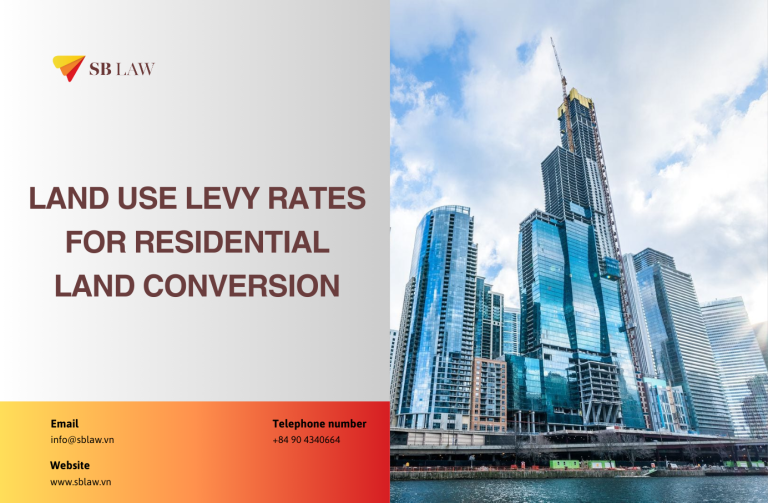Question:
Dear Lawyer, Our company is subject to the facility-level greenhouse gas emissions inventory requirement under the Industry and Trade sector, as stipulated in Decision No. 13/2024/QĐ-TTg issued by the Prime Minister on August 13, 2024. We have not undertaken this task before. Therefore, we seek your advice on the procedures and steps for preparing and submitting the required report.
Answer:
Legal Basis:
-
Regarding the procedures:
- The company must submit the facility-level Greenhouse Gas Emissions Inventory Report using Form No. 06, Appendix II of Decree No. 06/2022/NĐ-CP before March 31, 2025.
- Receiving authority: People's Committee of Bac Ninh Province.
- Within 5 working days of receiving the facility-level Greenhouse Gas Emissions Inventory Report, the People's Committee will assign the appraisal authority to assess the information and inventory results provided by the company. Within 20 working days, the appraisal authority will issue the results, which may include requests for adjustments or supplements. If corrections or additions are required, the company must complete the report by the appraisal authority’s notification.
-
Regarding the procedures:
Pursuant to Decision No. 13/2024/QĐ-TTg issued by the Prime Minister on August 13, 2024, your company falls within the scope of facility-level greenhouse gas emissions inventory in the Industry and Trade sector. Accordingly, the process consists of 08 steps as outlined in Circular No. 38/2023/TT-BCT, as follows:
Step 1. Determine the scope of facility-level greenhouse gas (KNK) inventory.
The facility-level greenhouse gas (KNK) inventory is conducted for emission sources under the management of the facility, specifically as follows:
- Direct emission sources:
- Emissions from stationary sources, including fuel combustion in fixed equipment such as boilers, kilns, burners, turbines, heaters, incinerators, etc.;
- Emissions from mobile sources, including fuel combustion in transport equipment;
- Emissions from industrial processes, including emissions from physical or chemical processes generating KNK in the facility’s production lines;
- Emissions from leakage in machinery or equipment, or during mining and mineral processing;
- KNK emissions from refrigerant solvents in equipment and production, business processes involving refrigerants;
- Emissions from the collection, management, and treatment of waste.
- Indirect emission sources:
- Emissions from electricity consumption;
- Emissions from the use of steam energy.
Step 2. Collect facility-level KNK inventory activity data.
- The facility is responsible for collecting, managing, and retaining activity data related to the emission sources under its management.
- The activity data required for the facility-level KNK inventory is specified in Section 1 of Appendix II of Circular No. 38/2023/TT-BCT.
Step 3. Select facility-level KNK emission factors.
- The facility shall calculate and determine the KNK emission factors that are suitable for the current technology and production processes in accordance with the 2006 IPCC Guidelines, and these must be approved by the competent authority.
- If the above calculation method is not applied, the emission factors from the Emission Factor List for KNK Inventory published by the Ministry of Natural Resources and Environment shall be used.
- In cases where KNK emission factors are not yet specified, the most recent IPCC guidelines on emission factors shall be applied.
Step 4. Determine the facility-level KNK inventory method.
The formula for calculating KNK emissions:
KNKi = ADi * EFi
Where:
- i is the type of KNK;
- KNKi is the emission amount of KNK i (tons);
- ADi is the activity data for KNK i;
- EFi is the emission factor for KNK i.
The formula for calculating the total KNK emissions of a facility:
Where:
- TPT is the total KNK emissions of the facility (tons of CO2tđ);
- GWPi is the global warming potential of KNK i, applied according to the most recent IPCC guidelines.
Step 5. Implement quality control for the facility-level KNK inventory.
The quality control process for the facility-level KNK inventory is conducted according to Section 6.1.2, Chapter 6 of the National Standard TCVN ISO 14064-1:2011, Part 1: Technical requirements and guidance for quantifying and reporting emissions and removals of KNK at the facility level.
Step 6. Assess the uncertainty of the facility-level KNK inventory.
- The assessment of uncertainty in the KNK inventory results addresses the following aspects:
- Completeness of the report;
- Practical relevance of the model and inventory method;
- Adequacy of the data used for calculations;
- Representativeness of the data;
- Anomalies in the data;
- Lack of transparency or errors in the inventory scope.
- The quantification of uncertainty in the KNK inventory is conducted following the guidance provided in Chapter 3, Volume 1 of the 2006 IPCC Guidelines and the 2019 IPCC Guidance.
Step 7. Recalculate the results of the facility-level KNK inventory.
- The facility is responsible for explaining and recalculating the KNK inventory results from previous reporting periods when any of the following situations occur:
- Changes in the scope of the KNK inventory;
- Changes in the inventory method leading to changes in the most recent inventory results;
- Changes in the emission sources or factors.
- The facility must incorporate the recalculated KNK inventory results from the previous reporting period into the facility-level KNK inventory report for the current reporting period.
Step 8. Develop the facility-level KNK inventory report.
The facility shall prepare the facility-level KNK inventory report using Form No. 06, Appendix II of Decree No. 06/2022/NĐ-CP.




